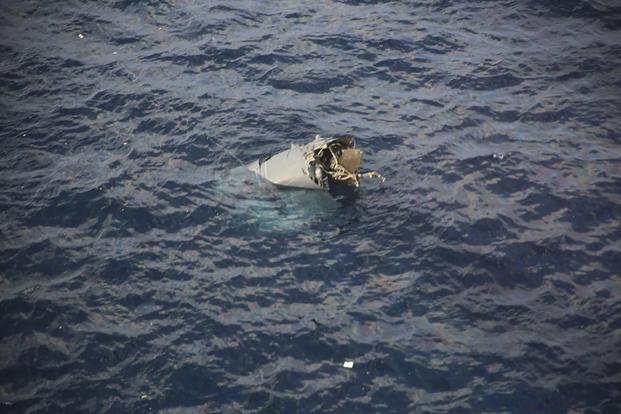The Air Force said Wednesday the voice and data recorder -- often called the black box -- from a CV-22 Osprey that crashed in late November off the coast of Japan has been located, a major find as the service investigates the incident that killed all eight airmen aboard.
Lt. Col. Rebecca Heyse, a spokeswoman for Air Force Special Operations Command, told Military.com that the black box "will be transported to laboratories for data retrieval" and that officials "expect the analysis process to take several weeks."
Seven of the eight remains of the airmen have been recovered and publicly identified, and search efforts are still underway Wednesday for the remains of Maj. Eric Spendlove, 36, of St. George, Utah.
Read Next: Into the History Books: Last Marine Corps Scout Snipers Graduate amid Service's Planned Redesign
Heyse added that "the vast majority of the aircraft was recovered" by the Navy's USNS Salvor and it has been taken to Marine Corps Air Station Iwakuni in Japan to be examined as part of the ongoing investigation.
The Air Force told Military.com last month that its Osprey aircraft are still crucial to operations but will remain grounded until they're deemed safe to fly following the crash -- the service's most deadly.
The Osprey went down during a training mission off of Yakushima Island on Nov. 29 and triggered a grounding of all Air Force, Marine Corps and Navy V-22s. As of Wednesday, that stand down was still underway. An initial investigation after debris was fished from the ocean indicated a mechanical failure in the Air Force special operations Osprey, raising new questions about the safety of the aircraft amid a mysterious clutch issue that has plagued the V-22 for over a decade.
The investigation into the crash in Japan is still ongoing, but the revelation that it could be a mechanical issue with the Osprey raises concerns amid a recent history of mishaps and deadly incidents.
While the specific circumstances and cause of the Nov. 29 Osprey crash remain unknown, the incident marks the deadliest CV-22 crash in the Air Force's history and the largest loss of life on the service's airframe, according to Air Force Safety Center data.
Prior to the training crash in Japan, three service members and a civilian contractor died when an Air Force Osprey crashed in April 2010 in Afghanistan, according to Air Force Safety Center Data. The cause could not be determined by an investigative board.
Since the Osprey's first flight in 1992, it has been involved in numerous crashes, accidents and mishaps, leading to more than 60 deaths.
Just two months prior to the Nov. 29 Osprey crash, two Marine V-22 Ospreys in Japan diverted on Sept. 14 within just two hours of each other due to "cockpit caution indications" in the aircraft while flying near where the Air Force Osprey crashed.
Related: Deadly Osprey Incidents Mount as Air Force Investigates Potential Mechanical Issue in Japan Crash












